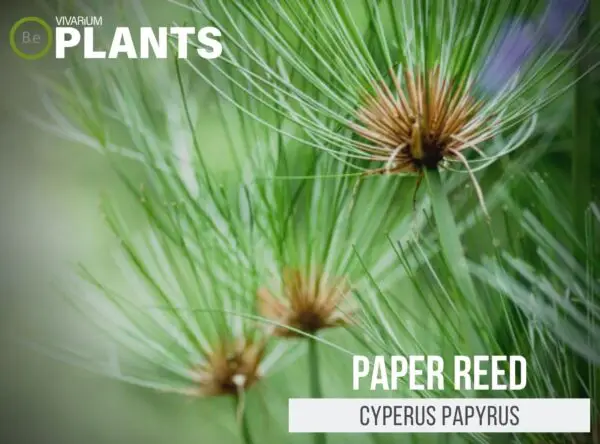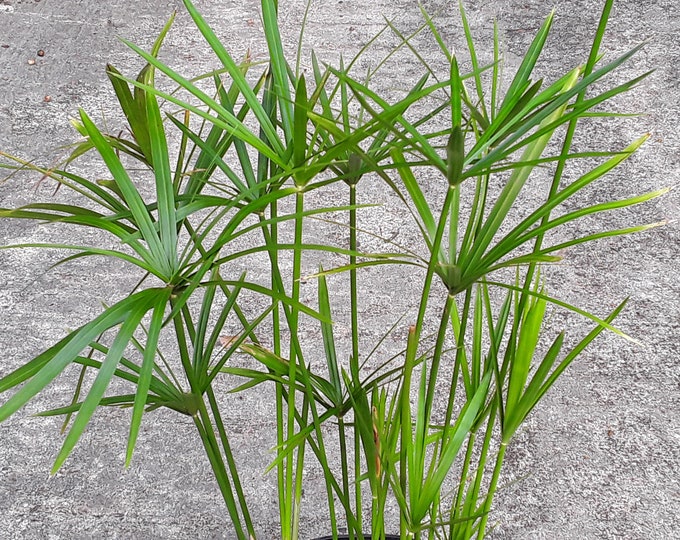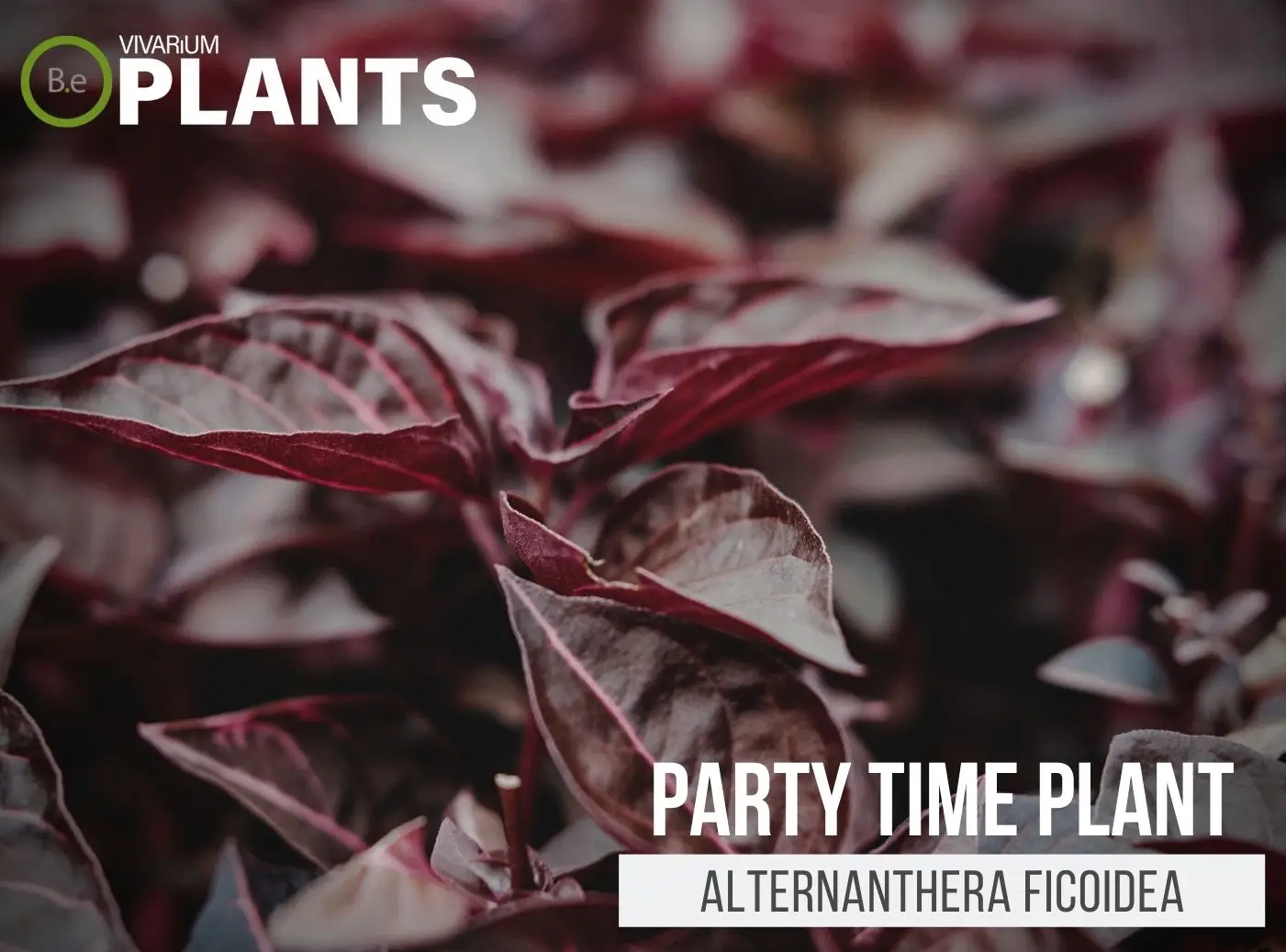Cyperus papyrus (Paper Reed) is an extremely attractive houseplant that is popular for its elegant, thin stems and bright green color.
Its unique aesthetics make it a great addition to virtually any aquarium, terrarium, or home décor setup.
Ideal for novice aquarists and more experienced vivarium keepers alike, Cyperus papyrus is a great plant with a range of unique perks we will cover in this article.
Table Of Contents:
ToggleQuick Stats:
Scientific Name: Cyperus Papyrus
Family: Cyperaceae
Common Names: Papyrus, Paper reed
Habitat: Moist, Freshwater
Height: 10-50 inches
pH Range: 6.5-7.5
Temperature: 72°F to 82°F
What Is Paper Reed?
Cyperus papyrus is a tall, hardy aquatic plant with long, thin ins of green and brown that form together. This plant grows in regions with high rainfall, but can also survive in drier environments as long as it is given enough irrigation.
This plant is a great choice for an aquatic vivarium and does quite well when planted in bunches. To the untrained eye, it can look quite a bit like a less thriving type of grass.


Paper Reed Plant Facts
Known by other names such as papyrus, paper reed, reedmace, and African bullrush, Cyperus papyrus is a member of a large family of grass–like plants known as the Cyperaceae family.
This plant is one of the tallest plants in the family, and its stems can reach heights of up to 50 inches. In the wild, this plant is found in various bodies of fresh water, making it a great candidate for the aquatic section of a vivarium.
Description
Cyperus papyrus may look grassy, but it is actually a flowering plant! Its leaves form distinct feathery blades, while its stems are much thinner than those of other plants.
The top of each stem is capped off by an umbrella–like feathery structure known as an ‘inflorescence‘.
It is this structure that makes the plant particularly attractive and prized among aquarists.
Habitat
Cyperus papyrus is found in areas of the world where freshwater supplies are plentiful, such as Southwest Asia and North Africa.
Its habitat includes marshes, ponds, and swamps, among other areas of steady moisture.
When housed in a vivarium, it’s best to simulate the conditions of its natural habitat for it to thrive.
pH Preference
Cyperus papyrus does well in aquariums with a slightly acidic pH balance. The ideal levels for this plant will range from 6.5 to 7.5, though it can survive in a slightly more alkaline environment.
Constant monitoring of the water levels with a pH testing kit is a must when keeping this plant in a home aquarium.
Vivarium Type
Paper Reed is quite an easy-going species. With that in mind, it will not be too complicated when choosing the type of enclosure it is grown in. It is best to try and replicate the plant’s natural habitat as much as possible.
Doing so will make it easier to provide this foliage plant with its basic needs. The proper setup and theme of the enclosure will make a big difference to the overall look and health of the plant. Be sure to choose setups that are moist and high in humidity.
Here are recommended vivariums it will do well in:
-
- Paludariums – Half aquatic/ half terrain-based enclosure.
- Ripariums – Mostly aquatic-based enclosures with some terrain features present.
- Aquariums – Fully aquatic-based enclosure with little to no dry terrain.
Vivarium Placement
This plant can be added to just about any aquatic vivarium, as long as there’s enough space for its growth since it tends to grow vertically and needs room to stretch out.
For a more natural look, consider adding this plant to the background of the tank. It will look best when planted in a thick bunch, as this enhances the grassy look of the leaves.
Substrate
Cyperus papyrus should be planted on a substrate that contains a mixture of sand and gravel.
For an even sturdier foundation, add some clay or soil to the mix.
The consistency of the aquatic substrate should be such that it allows the roots to penetrate it easily so that the plant can establish itself and absorb nutrients.
Lighting
This plant loves plenty of sunlight, so make sure to find a place in the aquarium where it can receive full or partial sun.
LED aquarium lights are perfectly fine to use, as long as they provide the natural spectrum of light that the plant needs.
Direct sunlight should be avoided, as too much heat and ultraviolet radiation can be damaging.
Buy Paper Reed
When buying Paper Reed, there are a few things to keep in mind. Making sure the plant is healthy when purchased is essential for its success in a vivarium or pond. Vegetation that is already in poor conditions will have a very hard time adjusting to new environments.
Click the image below to learn more about the current price and other relative info about this plant.
Paper Reed Plant Care & Propagation
Cyperus papyrus plants should be grown in moderately moist soil and need to be situated in spaces where temperatures stay between 72 and 82 degrees Fahrenheit.
In ideal conditions, this plant will naturally propagate itself through stem division. If stem division is not possible, the plant can be propagated through seed collection.
How To Grow
When the seeds are collected, they should be placed in a clean container filled with equal parts sand and organic soil.
Place the container in a spot with plenty of sunlight and water it twice a day to keep the soil moist. Keep doing this until the seeds eventually begin to sprout.
Water Requirements
Being an aquatic plant, Cyperus papyrus needs to stay moist in order to maintain its natural beauty and vibrant green color.
This can be accomplished by keeping a lid on the aquarium to keep humidity levels high. There should be a balance of water, not too much or too little.
Weekly water changes of 10%-20% should be enough to keep the water fresh and clean.
Plants Similar To Paper Reed
Adding diversity to an enclosure is key to an aesthetically pleasing setup. Try mixing up the look of your vivarium with different flora that can easily co-exist in the same types of environment.
Furthermore, if for some reason you find Paper Reed hard to acquire or would like to consider something similar to this aquarium plant… Here are other plants you might see will do well with or in place of Cyperus papyrus:
Conclusion
Cyperus papyrus is a great choice for an aquatic vivarium. Despite its tricky maintenance requirements, it is a very attractive plant that can add a beautiful natural look to any aquarium.
With an understanding of its basic care needs, and some knowledge of its habitat, set–up, water levels, and light requirements, this plant is sure to thrive and add a unique touch to any vivarium!
Frequently Asked Questions
Yes, Cyperus papyrus is considered an invasive species in some parts of the United States. It is also known as an emerging or potential threat to ecosystems in many other parts of the world.
No, Cyperus papyrus is not poisonous.
• Water Cyperus papyrus regularly, keeping the roots of the plant moist.
• Feed Cyperus papyrus with balanced liquid fertilizer once per month during the growing season. (BONUS)
• Place Cyperus papyrus in a location with bright, indirect sunlight.
• Prune Cyperus papyrus regularly, removing old and yellowing leaves from the plant.
• Apply a layer of mulch around Cyperus papyrus to help retain moisture in its soil.
• Watch for common pests, such as web-spinning spider mites and aphids, and treat infestations promptly.
Paper reed grows in wetlands and marshes in tropical, subtropical and temperate regions around the world. It is also found in semi–arid areas.
Yes, Paper Reed (Cyperus papyrus) is a perennial plant.






